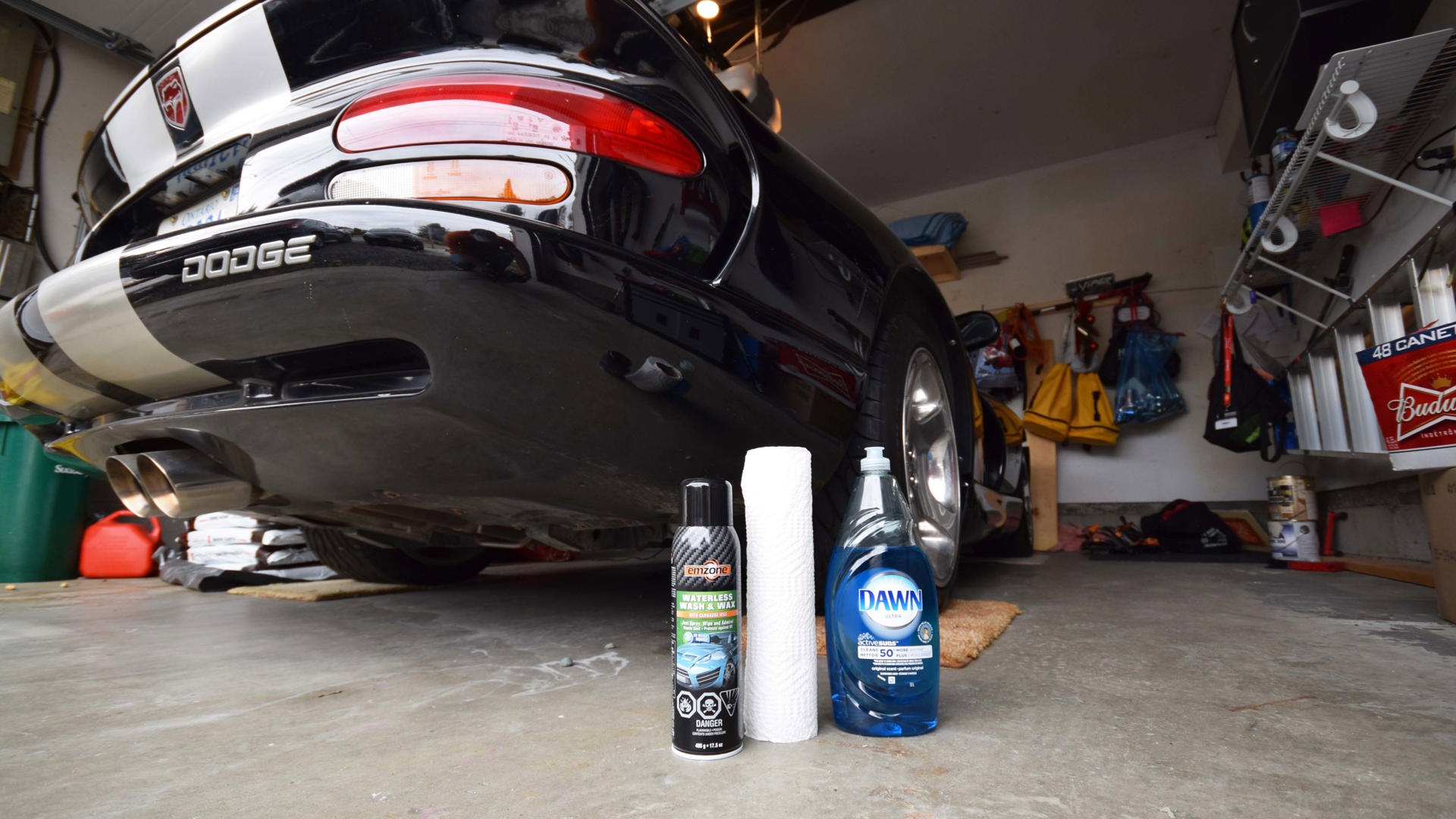Welcome to the 2018 installment of our somewhat-annual list of springtime car care hacks!
This year, we’re focusing on helping you make better use of the car care products you’re using now – that is, the stuff that’s currently in your garage or carport or car care caddy.
There’s no trip to the store required here: read on, and you’ll soon be using what you’ve already got, but using it smarter and more efficiently.
And remember: the thought of spending half of a gorgeous spring day cleaning a vehicle may make you want to take a bubble bath with a high-powered toaster, but a few pro-inspired tips can help you do a better job with less time and effort, which basically makes you a genius.
Glass Cleaner
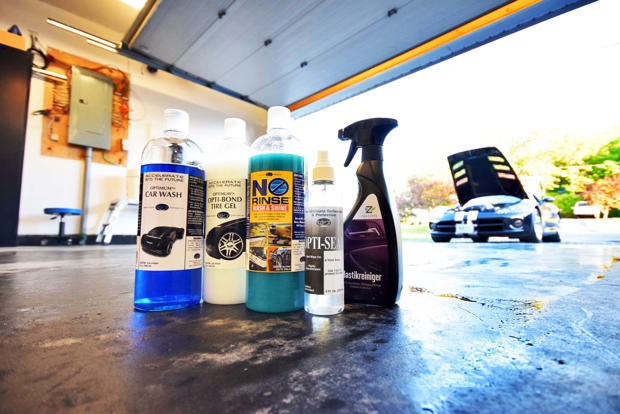
Whether you’re using household glass cleaner (which is so-so-ish for use on automotive glass) or a dedicated automotive glass cleaner formulated not to harm the coatings on your ride’s windows, here’s a top tip for crystal-clear glass: use the cleaner liberally. With an appropriate rag in hand (a quality, lint-free microfiber towel is best), soak the glass with cleaner, right to all edges.
Don’t be shy: you want that window sopping, and even more so if there’s dried-on dog slobber or ketchupy fingerprints from your kid’s fries. (Fun fact: “Ketchupy” is not in the dictionary, but you can play it in Scrabble for 22 points. You’re welcome!)
Wipe clean, folding the rag over itself when it becomes too wet to absorb the cleaner. Use two rags if needed. Or three.
The gist? With glass cleaner, more is typically better, but you’ll want to make sure you’re always wiping with a clean rag surface and not dry-wiping the window, which can redistribute smudges and grossness.
Upgrade Your Wash Pail Situation
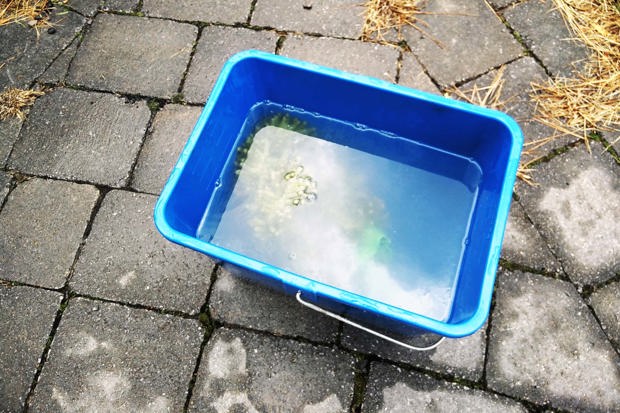
You know those little swirly scratches you see all over your ride’s paint when the light hits it just right? Those are your fault, and you’re a monster.
Often, they’re caused by careless washing – perhaps when you bring your car through the local drive-through scrape-and-wash, or possibly, because you’re washing your vehicle with filthy water.
Want to stop swirly scratches dead in their tracks, or stop them from forming in the first place on your brand-new ride’s paint? All you need is an extra pail.
When washing, use one pail for your soapy and sudsy wash water (never use dish soap; your ride isn’t a casserole dish), and another pail full of clean water, specifically for rinsing. Wash one body panel at a time, rinse the dirty sponge or mitt in the clean water pail, and then repeat.
This two-pail method means minimized cross-contamination with dirty water that’s full of scratchy particles, and your paint will last much longer without looking like it got a visit from Freddy Kreuger.
Pro Tip
Never, ever wash your ride’s paint with the same sponge or mitt you use to wash its wheels. Further, if you’ll wash the wheels with the same soapy water you use to wash the paint, do the wheels dead last, and be sure to rinse all wash pails out fully when you’re done.
The reason? Your ride’s wheels are coated in extra-scratchy particles, mostly from the braking system that lives behind them. This stuff will murder your paint to death in quick order, so keep wheel and paint washing as separate from one another as you can.
Interior Cleaner / Protectant
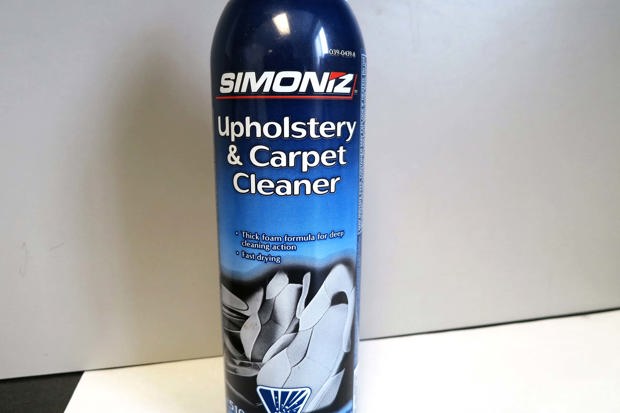
Read this not once, not twice, but thrice: if you spray interior cleaner or protectant directly onto your doors or dashboard, it’ll wind up all over everything – including your windows and windshield, where it’ll be a total PITA to clean off.
Dash protectant is especially problematic: even a little bit on your windshield can cause unsightly streaks that are all but impossible to remove. Other cleaners can cause permanent marking or fading of the plastic lens that covers your ride’s instrument cluster.
Solution? If dispensing a protectant or cleaner from a squirt/spray bottle, do it outside and away from the car, onto a rag or applicator, and then return to the vehicle for the wipe-down. Repeat as needed. Spraying cleaner and protectant away from your car ensures it only gets applied to the surfaces that it’s meant for.
Tire Shine
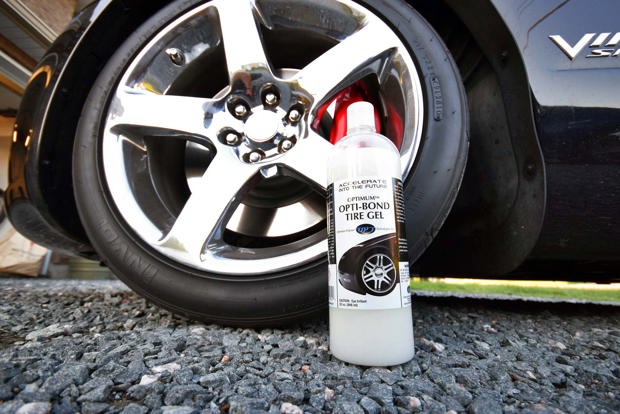
Fancy yourself a set of sidewalls with unparalleled lustre? Few things are sexier than glossy rubber, but you’ll want to make sure you’re not spraying that slick tire-shine spray anywhere near your ride.
Here’s what to do: get an appropriate applicator. Get your tire shine. Go far away, like to Winnipeg. Spray the tire shine onto the applicator. Return to your ride. Wipe the tire shine over your sidewalls. Rinse and repeat (but don’t actually rinse, it’s a figure of speech).
Not only will you use less product, save time, and get a better shine that stays in place for longer, you’ll also eliminate the risk of tire shine landing on your paint, where it can cause marks and streaks, collect dust or dirt, or otherwise leave your ride’s finish looking sub-par.
If your car ever needs some body work or repainting, your body-man will thank you for using this method too: even trace amounts of certain chemicals found in many tire shine products can wreak havoc with automotive bodywork and painting.
Smelly Spritzy Sprays
You’ve detailed your ride, cleaned it in with vigour and intent, polished it to a glimmering lustre, and will now treat yourself to a few spritzes of air freshener that’ll leave things smelling like Dairy Queen soft-serve and freshly ripened kumquats.
Professionals often finish a cleaning with a little spray of air freshener, and when they apply it, they usually spray it onto the carpeting underneath the seats, or on and around the floor mats. Spray air fresheners low in the car to keep it off of your dash and windshield, aiming for areas not exposed to direct sunlight or the footwear of entering and exiting passengers. You’ll use less product and experience a longer-lasting smell.
Spray Wax
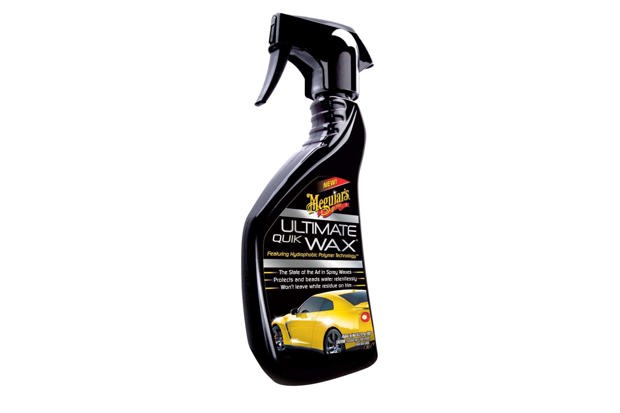
Also called liquid detailer, a spray wax is something many folks use to give their paint a glossy shine on the quick. Spray wax consists of wax droplets suspended in a liquid that you spray onto your paint, and then wipe off, leaving a coating behind.
Want to use less spray wax, work less, and save time? Of course you do, because you’ve got other stuff to do. So, get yourself one or more large microfiber towels and apply the spray wax in the shade, waiting until evening if possible, when it’s cooler outside.
Reason? In moments, the liquid portion of the spray wax can start drying, leaving a tacky mess if applied to hot paint in direct sunlight. Keep the paint cool, and you keep the liquid in the spray from evaporating as quickly. This translates into less need for aggressive wiping, which means less work for you, and less stress on your paint.
Work on only one body panel at a time, with a folded square of microfiber towel since using a balled-up towel is a newbie mistake. After each body panel, re-fold the towel so you’re using a clean square of fabric, which can prevent scratching.
Compressed Air
Do you have an air compressor, or a spare can of compressed air duster? If so, put on the finest tip you can, open all your doors, and use it as an interior detailing weapon of mass awesomeness. Direct the compressed air into the nooks, crannies, and cracks on your doors, seats, and dash, and fire away: small particles of dirt, food, and dust will be dislodged, and either blown out of the doors, or land on the floor nearby for future vacuuming. A few blasts of compressed air can go a long way towards dusting out your ride.
